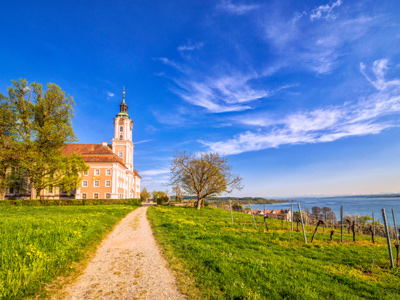
Christianity - Pilgrimage
This GCSE RE Christianity quiz takes a look at pilgrimage. ’Pilgrimage’ may refer to a specific journey by a religious person to a particularly spiritually-important place (such as by Muslims to Mecca), or more broadly to such people making their way through life in general according to the rules and principles of their belief.
For Christian believers, pilgrimage could be an elective journey to the Holy Land to walk in the virtual footsteps of Jesus and those in the New Testament whose lives He touched. Even in these days of relatively easy air travel, the far diagonal of the Mediterranean is a daunting haul for some people, not to mention the sad geo-political tragedies that continue to grind on over those very important tracts of land (contested partly, of course, because they are of such deep and evocative significance to a range of faiths and nations).
There are other holy places to which Christians might yearn to travel, and to experience for themselves. What we might call this next ‘tier’ would be sites associated with Saints of Bible times or more recently, such as shrines where great people of faith lived, visited, had visions or even died. There is believed to be an inherent blessedness about such sites as Walsingham (UK) or Lourdes (France) ~ to which latter, Catholics, in particular, have flocked since the Virgin Mary appeared to Bernadette Soubirous in 1858, in faith now that the waters of the grotto there might heal any illnesses or injuries that they have.
Meanwhile, the daily ‘earthly pilgrimage’ continues for Christian believers as they put one foot in front of the other on the walk God has set them in life. Not everyone feels drawn to make a special geographical pilgrimage, but we hope this quiz will offer some understanding of the ‘how and why’ (and where!) for those who do or might.
Your writer has been briefly to Rome, but also to Malta ('the honeyed island', as this means in Latin) where the site of Paul's shipwreck is named and commemorated; there is an interesting walking-trail based out of Xemxija which takes in a small Roman military bathhouse ~ which could quite plausibly have been his first stop under escort after coming ashore (and the incident with the snake at the bonfire) ~ and not far away from that, there's also an apiary (bee-house) from Roman times. Even seeing these is quite an evocative experience.
Towards the end of the 20th century, a sculpture was donated for installation alongside the 'new' cathedral's Chapel of Industry ~ portraying the head and torso of the crucified Christ, as made of scrap metal from cars that had been involved in fatal accidents.
Why, or how, would the Cathedral authorities find grateful and suitable use for such a well-intentioned, but macabre, artefact?
Coventry has had strong links with the motor trade since this began: this is how it came to be involved in making and repairing military motors during the War, and hence attracted German bombardment. A modern ministry to those bereaved through motor-related deaths is an entirely reasonable, indeed (when one considers it) healthy initiative for a cathedral in such a position.
Ready for more?
not all...
quizzers. Try to win a coveted spot on our Hall of Fame Page.







